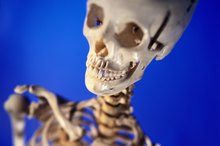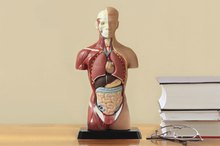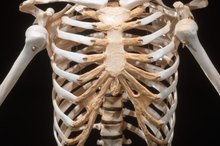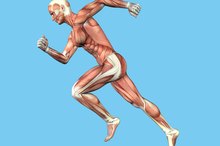What does fact checked mean?
At Healthfully, we strive to deliver objective content that is accurate and up-to-date. Our team periodically reviews articles in order to ensure content quality. The sources cited below consist of evidence from peer-reviewed journals, prominent medical organizations, academic associations, and government data.
The information contained on this site is for informational purposes only, and should not be used as a substitute for the advice of a professional health care provider. Please check with the appropriate physician regarding health questions and concerns. Although we strive to deliver accurate and up-to-date information, no guarantee to that effect is made.
Different Cells in the Human Body
The human body consists of trillions of cells, individual functional units working together to keep us alive. More than 200 types of cells thrive in the human body, according to Steve Parker in "The Human Body Book," and each cell's structure is specially adapted to the particular role it plays 4. Although many types of cells are distinguished based on their specific characteristics, biologists categorize them into general groups due to basic shared qualities.
Epithelial Cells
Epithelial cells exist throughout the body and function as protective linings covering the insides and outsides of various organs. They can be round, box-shaped, or flattened in structure and often have cilia, tiny hairlike extensions, on their surfaces to sweep away foreign materials.
Nerve Cells
Specialized Cells in the Skeletal System
Learn More
Nerve cells make up the brain, the spinal cord and all the nerves that branch out of it. The long, thin structure of each nerve cell helps electrical signals pass quickly throughout the body. Many nerve cells wear a layer of fat that helps insulate the signal.
Photoreceptor Cells
Rods and cones, two types of specialized nerve cells located in the retina at the back of the eye, respond to light and allow us to distinguish between different colors.
Bone Cells
3 Major Cell Types
Learn More
Although bone tissue contains several different types of bone cells, the main substance of the bone is made of a special type of bone cell called an osteocyte. These cells maintain the regular structure of the bones and regulate the release of calcium into the bloodstream.
Muscle Cells
Muscle cells, also known as muscle fibers, are long spindle-like strands that exist in bundles that make up the muscles in the body. Their elongated structure allows for the sliding of the muscle fiber's components, actin and myosin, along each other. This action is necessary for muscle contraction.
Fat Cells
Fat cells, also known as adipose cells, store fat droplets in the bulk of their volume for use as energy should the body require it. They can be found surrounding internal organs and just under the skin.
Red Blood Cells
Tiny, round, disk-shaped red bloods cells constantly transport oxygen throughout the body 2. Their unique structure allows them to squeeze through even the tiniest of spaces, efficiently carrying oxygen to every other cell in the body.
White Blood Cells
White blood cells, also known as macrophages or leucocytes, roam freely in the blood scouting for harmful bacteria or other foreign particles, which they readily destroy by engulfing them and breaking them down. They also aid in regulation of the immune system and help in the wound healing process.
Related Articles
References
- U.S. National Library of Medicine: Epithelium
- Science Daily: Macrophages: The 'Defense' Cells That Help Throughout the Body
- National Geographic: A Fin is a Limb is a Wing
- "The Human Body Book"; Steve Parker; 2007








